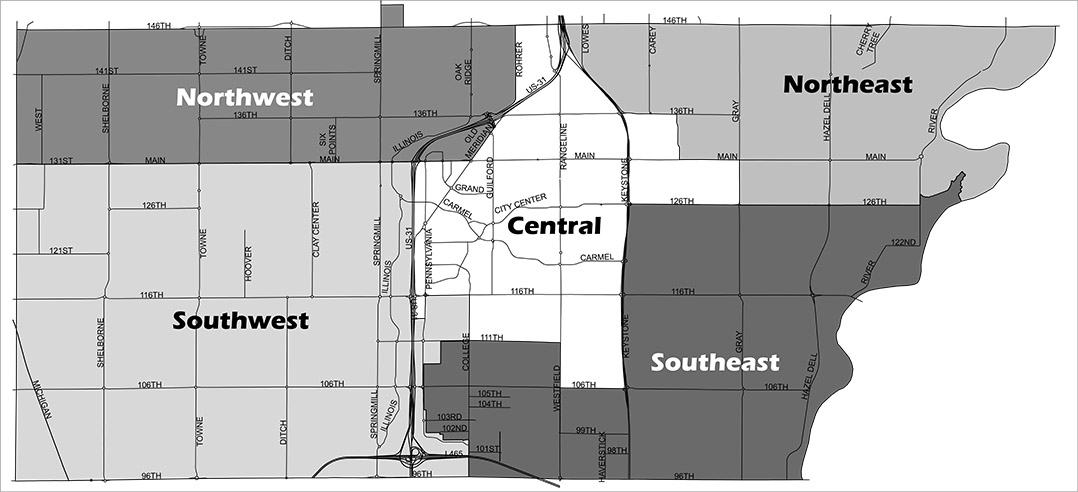Carmel will add two seats to its city council as a result of it becoming a second-class city last year. To make it happen, councilors are working to create a new district and shift others to equalize populations.
The council is currently comprised of seven members, with two elected at-large and five elected to represent districts of the city. Carmel will add one at-large councilor and one from a district as a result of the 2019 elections.
The city council approved a resolution outlining guidelines for city council redistricting at its Aug. 20 meeting.
City Councilor Sue Finkam is serving as the city’s redistricting coordinator. She is tasked with working with the legal team to develop a redistricting plan and keep the rest of the council and the public up to date on the process.
“I wanted to do it,” she said of the role. “It’s a fun project you don’t get to do very often. Working with the community to do that will be kind of fun.”
The city is working with the Indianapolis-based law firm Kroger, Gardis & Regas to develop a redistricting plan at a cost of $6,543.50 so far.

The city’s transition to second-class status instigated the need for redistricting, but Finkam said it will also benefit the community in other ways.
“If you look at the amount of people in each one of our districts right now, it’s pushing 20,000 or more. This will be able to provide more personalized attention if we can get those numbers down to 14,000 or 15,000,” Finkam said. “On big projects that are important to the community where we get lots of emails and lots of calls, it’s going to be helpful to be more responsive.”
The guidelines state that the six districts should be comprised of contiguous territory, be reasonably compact, aim to not cross precinct boundary lines and contain equal population.
The city will use information from the 2010 census – which the guidelines state is “now dated” – and 2016 special census to create districts with equal population. Any district proposed to deviate from the ideal district population by more than 5 percent will be justified in writing.
The guidelines also state districts shall not dilute “the voting strength of any language or racial minority group” or discriminate against an “identifiable political group.”
Members of the public are welcome to submit their own redistricting plans – that must follow the guidelines – by noon Oct. 5 to the Clerk-Treasurer’s Office. Public plan submission kits, which will include maps and tables showing precinct boundaries, population statistics and other key information, will soon be available for pickup at the Clerk-Treasurer’s Office.
Finkam said very few plans have been submitted by the public in previous years.
According to the guidelines, the city must release a draft plan no later than noon on Oct. 5. The council expects to hold a public hearing on the draft at its Oct. 15 meeting, with a second meeting on the issue tentatively planned for Nov. 5. Final adoption must occur by Nov. 8.
The city last redistricted in 2012 and will do it again in 2012, as law requires that it take place two years after the U.S. Census.
TIMELINE
- Sept. 17 – Last day for members of the public to submit objections regarding redistricting guidelines
- Oct. 5 – Deadline for plans submitted by the public; release of city redistricting plan draft
- Oct. 15 – Public hearing to review redistricting plan
- Nov. 5 – Tentative date for public meeting to make revisions to plan
- Dec. 5 – Filing of certified copy of ordinance establishing districts with the clerk of the Hamilton County Circuit Court



